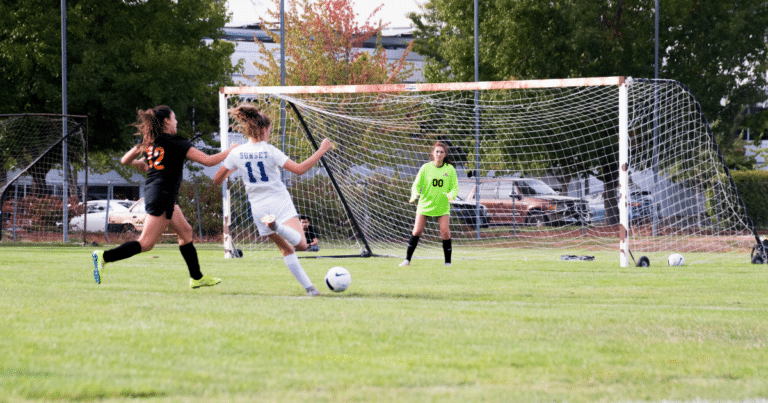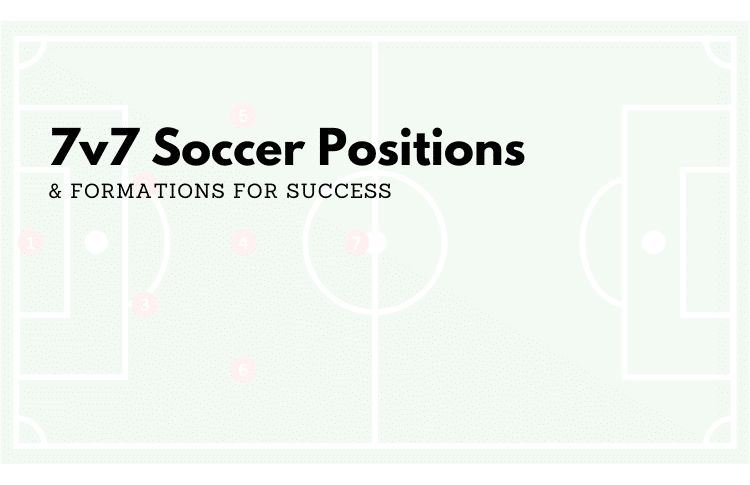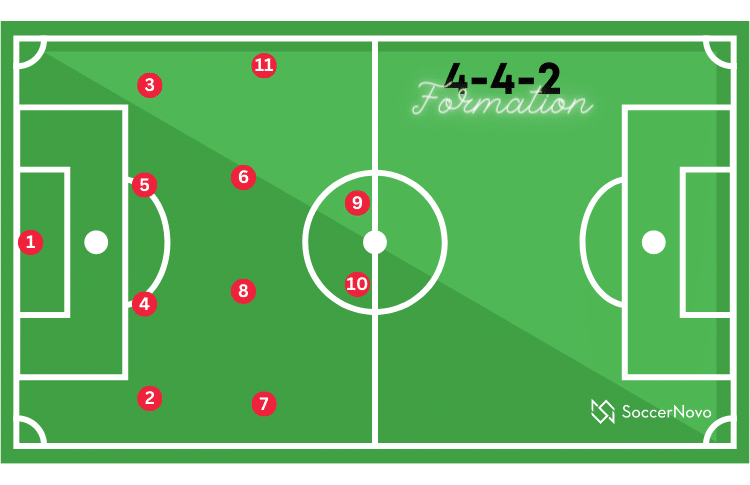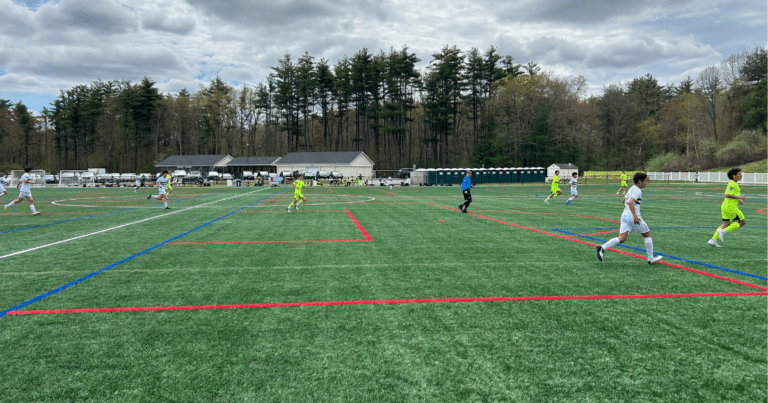9v9 Soccer Positions

In U.S. youth soccer, 9v9 is typically played by players in the U-11 and U-12 age groups.
Key Takeaways From This Article:
- There are four lines of players in a 9v9 format.
- Specific formations require different positions. For example, in a standard 3-3-2 formation, there are (3) defenders, (3) midfielders, and (2) strikers. [jump to formations]
- As a coach, you want to make sure you put kids in the best possible position to succeed.
The switch to 9v9 soccer is often made as a part of a player’s transition from small-sided games (usually 5v5 or 7v7) to full-sized 11v11 games.
The 9v9 format allows for a slightly larger field and more players on each team, which helps players develop the necessary skills for playing full-sized soccer.
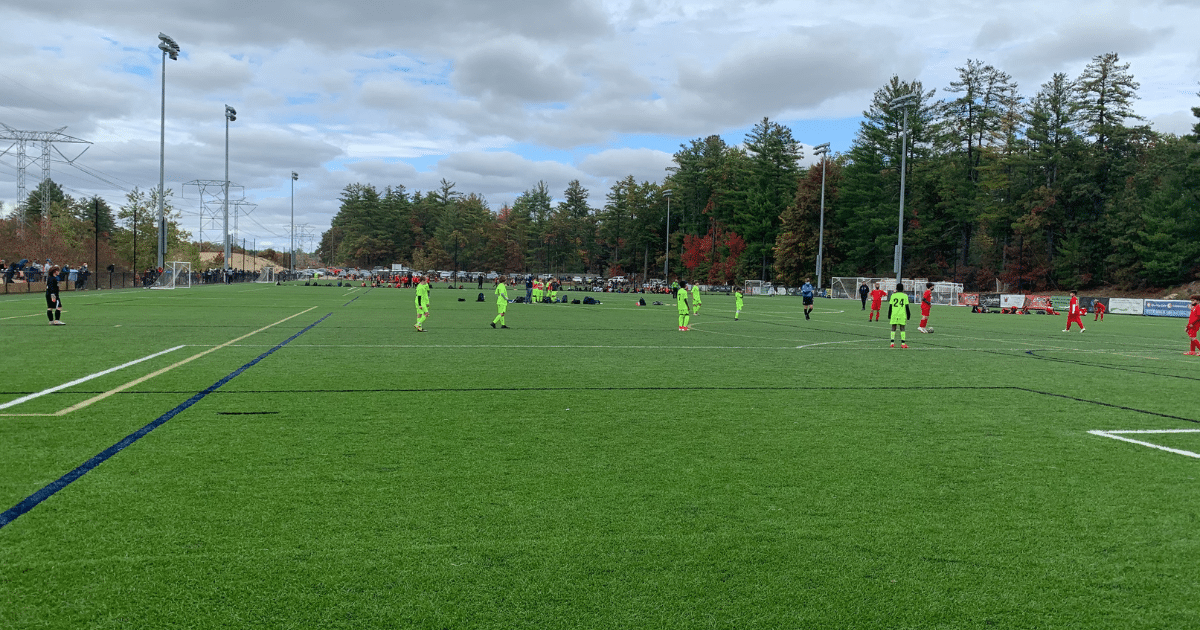
As a side note – I’ve heard many coaches share their opinion on when players should transition to a full field and many think players in the U.S. move on too early. The consensus is that they should start on a full field at age 14 and not 12. I agree with this logic.
Players at 14 years old are much more developed and don’t need to put everything they have behind the ball.
I would love to see a couple more years on the smaller field so players can work on their technical skills more.
In this article, we’ll address the most common formations for 9v9 soccer positions and some of the strategies for team success.
What Are the 9v9 Positions in Soccer?

As we’ll address the different formations, it’s important to keep these positions in mind:
- Goalkeeper (GK)
- Center Back (CB) or Right/Left Backs (RB, LB)
- Defensive Midfielder (DM) or Central Midfielder (CM)
- Winger (RW or LW)
- Striker (ST)
Basic 9v9 Soccer Formation
9v9 soccer formations often have four lines of players, just like 11v11 formations.
- The goalie stands between the goalposts as the final line of defense
- A defensive line (defenders)
- A middle line (midfielders)
- A forward line (strikers)
Teaching the significance of positions and their roles in young players is critical for their development.
With this said, the lines of a soccer formation should be used as a guide and not the end-all. This is especially true in the younger age groups.
For example, central defenders should focus on defending the middle of the field rather than racing to the sides in search of the ball.
At the same time, give them the freedom to track back or attack when necessary. With a smaller field, players can recover quickly.
As a coach, you’ll want to mix players into different positions based on what you need, the game flow, and the potential you see in players.
Coaching 9v9-sided games can come with its challenges but can also be the spark for many of the young players to flourish.
What Are the Best 9v9 Soccer Formations?
3-3-2 Formation
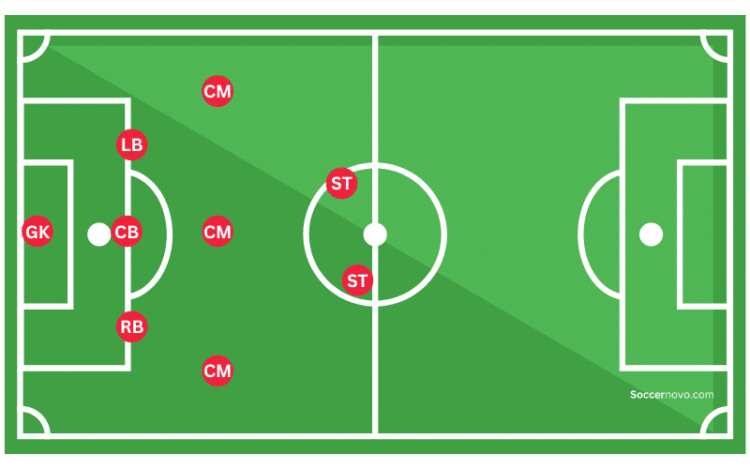
This is perhaps the most common lineup for a 9-on-9 soccer game. It’s a variation of the standard 4-4-2 formation used in 11-a-side soccer, with one fewer player in each defensive and midfield line.
Youth coaches who don’t want to overcomplicate things can often find success with a 3-3-2 formation. This lineup doesn’t overload any third line and keeps each layer of the team well-balanced.
If you are starting your season, I recommend rolling with this formation and adjusting as you see fit.
4-3-1 Formation
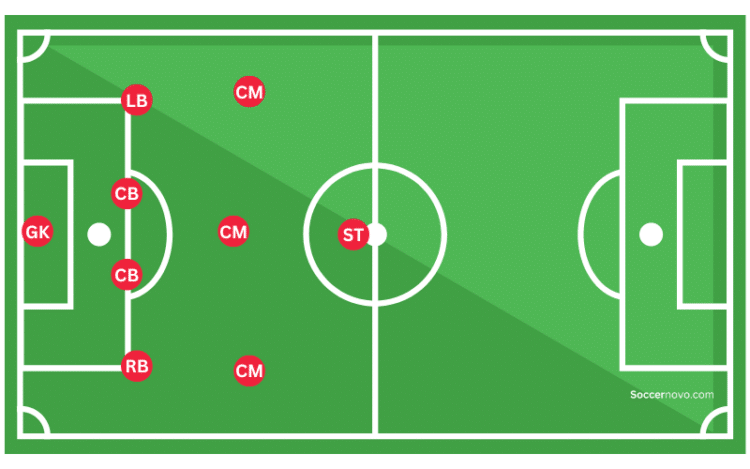
The 4-3-1 enables a back four to be used, which is the norm for professional soccer teams. This formation is ideal if you are up in the game or if your opposition has a good attacking game.
Compared to the 3-3-2 formation, the center midfielder (CM) player has more flexibility in this formation. With two central defenders protecting their backs, they can direct their attention toward creating passing channels for the wingers and lone striker.
With the full-backs protecting the wide defensive zones, the wide midfielders can concentrate on attacking plays during the transition.
3-1-3-1 Formation
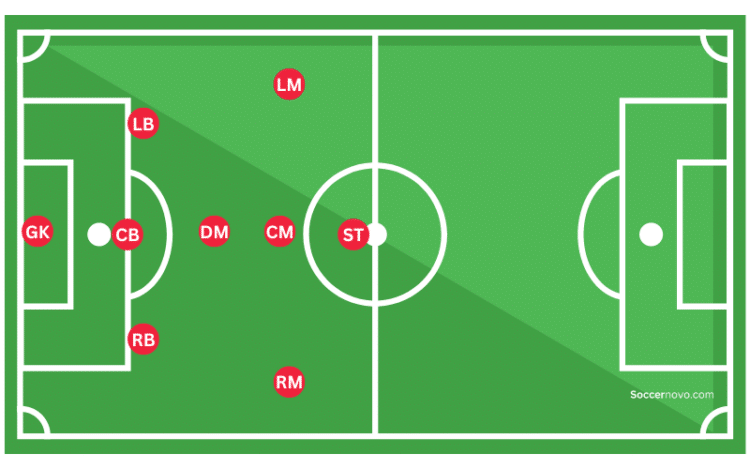
The 3-1-3-1 formation is an alternative to the more common 4-3-1 that utilizes a back three with a defensive midfielder (DM) in the middle.
The 3-1-3-1 formation allows a coach to exploit offensive skills even more than the 4-3-1 does, especially if a holding man is comfortable on the ball and ready to disrupt opposing attacks.
2-4-2 Formation
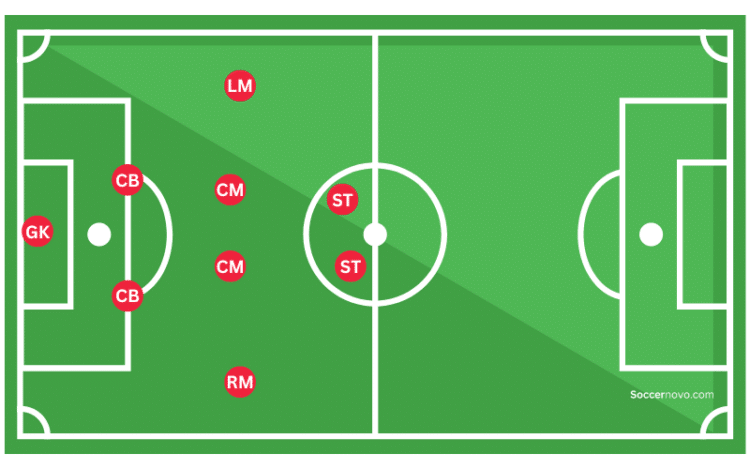
Teams that wish to control the ball more should consider the 2-4-2 formation.
The 2-4-2 allows teams to maintain possession more and create short attacking plays.
The key in this formation is for the midfielders to be patient and confident on the ball.
This center-focused formation allows for simple one-touch passing and dribbling. The midfielders work to force the defense to throw a player out of position, opening up space for the attack.
In this formation, you’ll want your strikers to be able to work well together. Both attackers need to be ready to make well timed runs or help out the midfielders bridge the gap into the final third.
Where Should the Best Players Be Placed?
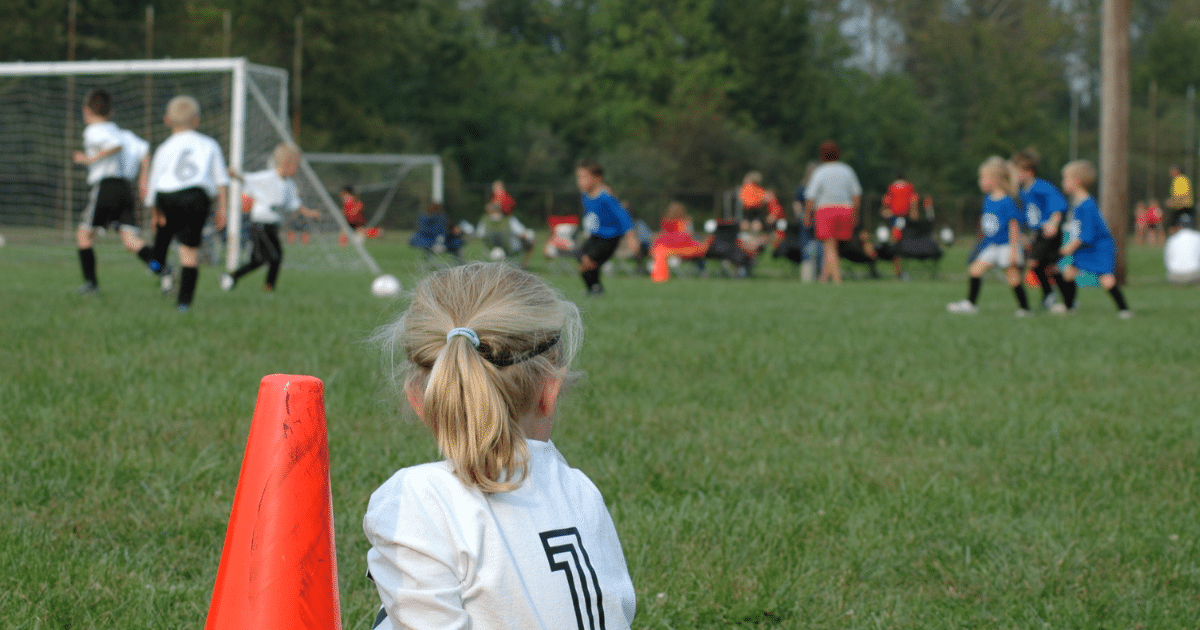
To be honest, it doesn’t matter much at this age. You want to put kids in the right positions to succeed and grow.
If you are still stuck on the concept of placing the best players somewhere, read on…
It’s common for youth teams to have one or two stronger players. Players who can dribble out of danger, make clean tackles, and find the open player are typically the most effective during games.
Building your youth soccer team from the center-out can be a great strategy since most of the activity tends to be in the middle. Therefore, you may want to consider placing your strongest players in the midfielder positions.
Fastest & Quickest Players
Having quick feet is a valuable asset to any team. It may have a positive impact, whether it’s the fullback getting back up or the winger taking on a player.
A fast-paced player should be stationed where they can have the most impact. In this case, placing them as a winger or strikers is ideal.
Conclusion
I hope this article helps shed more light on soccer positions, formations, and a little guidance on coaching a team.
It’s important to ensure your players keep their shape. Players should understand the general area they cover and their responsibilities. Having the ability to ‘roam’ a little will give them enough freedom to play on the field without looking too much toward the sidelines.
Also, at this age, try to move kids around in different positions. For the sake of the player’s development, moving players to different spots on the field can give them different perspectives. They may find success in a position they didn’t consider.
Best of luck in your games and remember to keep it FUN!

Written By: SoccerNovo
SoccerNovo is an independent youth soccer media brand built to help parents, players, and coaches better understand the game and the pathways available in U.S. soccer. Our mission is to make youth soccer simpler, clearer, and more accessible for everyone involved in it.
Let’s connect


